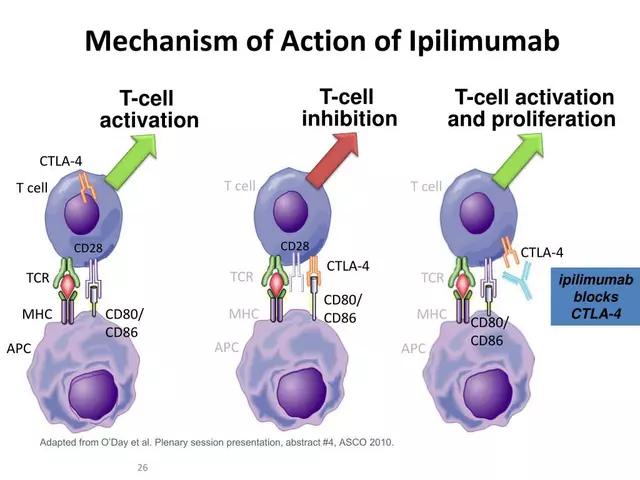Quick Takeaways
- Most seizures are provoked by identifiable triggers such as lack of sleep, flashing lights, or alcohol.
- Keeping a seizure diary helps spot patterns and personalize avoidance strategies.
- Simple lifestyle changes-regular sleep, stress management, and medication adherence-cut risk dramatically.
- When a trigger is unavoidable, have an emergency plan and inform your support network.
- Consult a neurologist if triggers change or seizures increase despite precautions.
What Are seizure triggers?
In plain terms, seizure triggers are anything that can set off a seizure in a person who has epilepsy. They’re not random; the brain’s electrical balance is nudged over the edge by specific factors. Understanding which nudges matter to you is the first step toward staying seizure‑free.
Key Players in the Brain: Epilepsy is a neurological disorder characterized by recurrent seizures. Knowing how it works makes triggers clearer.
Epilepsy involves hyper‑excitable neurons that fire abnormally. Triggers usually affect the brain’s chemistry or electrical environment, making it easier for these neurons to misfire.
Common Lifestyle Triggers
Everyday habits can shift the balance. Below are the most frequent culprits.
- Sleep deprivation is the single biggest self‑reported trigger among adults with epilepsy. Missing even a few hours can lower the seizure threshold.
- Alcohol interferes with antiepileptic drug metabolism, especially binge drinking. A dose‑response relationship exists: the more you drink, the higher the risk.
- Stress releases cortisol, which can destabilize neuronal networks. Chronic stress is linked to a 30% increase in seizure frequency in some studies.
- Caffeine can act as a mild stimulant, potentially provoking seizures in sensitive individuals. Moderate intake (under 200mg per day) is usually safe, but watch your own reaction.
- Fasting or low blood sugar reduces the brain’s glucose supply, an essential fuel for stable neuronal firing. Skipping meals or extreme diets raise seizure risk.
Environmental and Sensory Triggers
Things around you can be just as influential as what you do.
- Flashing or flickering lights (e.g., strobe lights, video games, certain TV scenes) can provoke photosensitive seizures. About 3% of people with epilepsy are photosensitive, and the risk spikes with brightness over 100cd/m².
- Extreme temperatures-both heat and cold-affect electrolytes and blood flow. Heatstroke episodes have been associated with clusters of seizures in hot climates.
- Strong odors such as perfume or gasoline fumes can trigger seizures in a small subset of patients. The mechanism likely involves autonomic nervous system activation.

Medical and Medication‑Related Triggers
Even the best‑intentioned health moves can backfire if you’re not careful.
- Medication non‑adherence is the leading cause of breakthrough seizures. Missing doses of antiepileptic drugs (AEDs) reduces plasma levels by up to 40% within 24hours.
- Drug interactions (e.g., certain antibiotics, antifungals, or birth control pills) can lower AED effectiveness. Always check with a pharmacist.
- Hormonal changes during menstrual cycles, pregnancy, or menopause can shift seizure thresholds. Up to 50% of women report catamenial seizures.
- Fever and infection raise metabolic demand and can unmask latent seizures. In children, a temperature above 38°C often precedes a seizure.
Tracking Your Own Triggers
Personal data beats generic advice. Here’s how to build a simple seizure diary.
- Record the date and exact time of each seizure.
- Note what you ate, drank, and any medication taken in the previous 24hours.
- Log sleep duration, quality, and any naps.
- Write down stressors, emotional mood, and environmental factors (lights, temperature).
- Review weekly patterns; look for recurring themes.
Most neurologists recommend using a spreadsheet or a dedicated app that can generate visual heat maps of trigger frequency.
Practical Steps to Reduce Risk
| Trigger | Typical Impact | Simple Avoidance Tactic |
|---|---|---|
| Sleep deprivation | Raises seizure frequency by up to 50% | Set a consistent bedtime; aim for 7‑9hours |
| Flashing lights | Can provoke photosensitive seizures | Use screen‑filter glasses; enable “reduce flashing” settings |
| Alcohol | Disrupts AED metabolism | Limit intake to ≤1 drink per week; avoid binge patterns |
| Stress | Elevates cortisol, lowering seizure threshold | Practice daily mindfulness or breathing exercises |
| Medication missed | Plasma AED levels drop rapidly | Set phone reminders; keep a pill organizer |
Beyond the table, a few universal habits help:
- Stay hydrated-dehydration can mimic low‑blood‑sugar triggers.
- Maintain a balanced diet; avoid extreme low‑carb or fasting regimes without medical supervision.
- Keep emergency medication (e.g., rescue benzodiazepine) accessible.
- Tell friends, family, and coworkers about your seizure action plan.
When to Call a neurologist for a seizure evaluation.
If you notice any of the following, it’s time for a professional review:
- Sudden increase in seizure frequency despite stable triggers.
- New type of seizure (e.g., progressing from focal to generalized).
- Unexplained loss of consciousness or aura without seizure.
- Pregnancy or hormonal changes that alter seizure patterns.
- Plans to start or stop a medication that could interact with AEDs.
Your neurologist may order an EEG (electroencephalogram) to assess brain activity. Based on findings, they might adjust drug dosage, add a new AED, or suggest lifestyle counseling.
Frequently Asked Questions
Can I ever outgrow seizure triggers?
Some people experience fewer triggers as they age, especially if hormonal or developmental factors settle. However, most adults retain at least a few persistent triggers, so ongoing vigilance remains key.
Is it safe to exercise if I have epilepsy?
Yes-regular aerobic activity improves sleep, reduces stress, and can lower seizure frequency. Just avoid high‑impact sports without proper supervision and always have a spotter for water‑based activities.
How often should I review my seizure diary?
Aim for a weekly review. Look for patterns, then discuss notable trends with your neurologist during each appointment.
Do all antiepileptic drugs have the same trigger profile?
No. Some AEDs, like carbamazepine, are more sensitive to alcohol interactions, while others, like valproate, can be affected by hormonal fluctuations. Your doctor can match a drug to your lifestyle.
What should I do if a seizure occurs despite my precautions?
Stay calm, protect the person from injury, note the time, and call emergency services if the seizure lasts longer than 5 minutes or if another seizure follows immediately.




Alan Clark
September 28, 2025 AT 00:12Great stuff! Gotta keep track of those triggers, it really helps.
Mark Anderson
September 30, 2025 AT 07:46Love how this breaks down the usual mumbo‑jumbo into real‑world steps. A solid plan for anyone juggling meds, work, and the occasional night out.
Shouvik Mukherjee
October 2, 2025 AT 15:19It’s wonderful to see the emphasis on personal diaries; they’re like a cultural bridge between patients and clinicians, giving each person a voice.
Ben Hooper
October 4, 2025 AT 22:52Sleep is the cheapest seizure‑prevention hack.
Marjory Beatriz Barbosa Honório
October 7, 2025 AT 06:26A quick reminder: you don’t have to quit coffee cold‑turkey, just notice if it nudges your threshold and adjust. Small tweaks add up like a domino effect of safety.
G.Pritiranjan Das
October 9, 2025 AT 13:59Set phone alarms for meds; consistency beats chaos.
Karen Wolsey
October 11, 2025 AT 21:32Oh sure, because we all have a personal trainer on standby to monitor our blood sugar 24/7-just kidding, but a simple snack schedule can truly curb those surprise spikes.
Trinity 13
October 14, 2025 AT 05:06When we sit down and actually map out the labyrinth of triggers that haunt those with epilepsy, we’re doing more than just ticking boxes; we’re engaging in a kind of existential cartography.
Each entry in a seizure diary is a breadcrumb, a tangible signpost pointing toward patterns that the brain might otherwise hide.
Consider sleep deprivation: it isn’t merely “being tired” – it’s a neurochemical roller coaster that lowers the seizure threshold with every missed hour.
Alcohol, on the other hand, acts as a stealthy saboteur, hijacking the metabolism of antiepileptic drugs and turning a casual night out into a minefield.
Stress, that ever‑present companion, releases cortisol, and cortisol in turn reshapes neuronal excitability, making the brain more jittery than a caffeine‑driven squirrel.
Caffeine itself may be a mild provocateur, but the dose makes the poison, and moderate consumption can be safely woven into daily life.
Fasting or extreme diets starve the brain of glucose, the very fuel that keeps neuronal firing in harmony, and the resulting energy deficit can spark seizures like a short‑circuit.
Flashing lights are the classic villain in photosensitive epilepsy, a reminder that even the most innocuous entertainment can trigger a storm.
Extreme temperatures shift electrolytes and blood flow, turning a scorching summer day into a hidden hazard for some sufferers.
Strong odors may seem trivial, yet for a subset they ignite autonomic responses that tip the scales toward a seizure.
Medication non‑adherence is the single most preventable cause of breakthrough seizures; a missed dose can slash plasma drug levels by nearly half in a day.
Drug interactions, from antibiotics to birth‑control pills, are sneaky culprits that can undermine even the best‑managed regimen.
Hormonal fluctuations-whether during the menstrual cycle, pregnancy, or menopause-alter the brain’s electrical landscape, making vigilance essential.
Fever and infection raise metabolic demand, often unmasking latent seizures, especially in children.
All of these factors converge on a simple truth: knowledge is power, and a well‑kept diary transforms raw data into actionable insight.
So, grab a notebook or an app, log the details, review the trends, and share them with your neurologist; that partnership is the cornerstone of seizure freedom.
Rhiane Heslop
October 16, 2025 AT 12:39National health policies should mandate seizure‑trigger education in schools, no ifs or buts.
Dorothy Ng
October 18, 2025 AT 20:12Keeping a log doesn’t have to be a chore; a few bullet points after each event work just fine.
Justin Elms
October 21, 2025 AT 03:46You know the drill – sleep, meds, stress less.
Jesse Stubbs
October 23, 2025 AT 11:19Seriously, another table? Who even reads those? Drama aside, the point is clear.
Melissa H.
October 25, 2025 AT 18:52Interesting take on photosensitive triggers 😊.
Edmond Abdou
October 28, 2025 AT 01:26Sharing your diary with a trusted friend can create a safety net that’s both practical and comforting.
Sydnie Baker
October 30, 2025 AT 08:59The ontological ramifications of trigger identification transcend mere prophylaxis; they constitute a paradigm shift in neuropharmacological stewardship.
Benjie Gillam
November 1, 2025 AT 16:32Yo, the neurophysio-chemical cascade when you skip a dose is like a dominoes nightmare, total chaos in the cortical network.
Naresh Sehgal
November 4, 2025 AT 00:06Yo, that deep dive is solid but remember, real‑world compliance beats any theory-just lock those meds in a jar and set a timer!
Poppy Johnston
November 6, 2025 AT 07:39Sounds intense, but honestly, just start with a simple sleep log and see what pops up.
Johnny VonGriz
November 8, 2025 AT 15:12Agreed; consistency is key, but let’s also ensure the system isn’t so rigid that it becomes unsustainable over time.